
Hestur Island: The Tranquil Gem of the Faroe Islands
Discover Hestur Island: A tranquil paradise in the Faroe Islands, offering stunning landscapes, rich birdlife, and unique adventures for nature lovers.
Hestur Island, a small and serene island in the Faroe Islands, offers a perfect escape for nature lovers and peace seekers. With its dramatic cliffs, lush green landscapes, and abundant birdlife, Hestur is a haven for hikers and outdoor enthusiasts. The island is home to only a few inhabitants, providing a unique opportunity to experience the unspoiled beauty and tranquility of the Faroe Islands. The island’s name, Hestur, means 'horse' in Faroese, inspired by the island’s shape, which resembles a horse lying down. Visitors can explore the island’s stunning coastlines, including the famous Hælur Beach, known for its striking black sands and clear waters. The cliffs of Hestur are also a prime spot for birdwatching, where you can see puffins, guillemots, and other seabirds. One of the highlights of Hestur Island is the famous underwater cave, Álvastakkur, accessible by boat. This natural wonder offers a unique adventure for those looking to explore the island’s marine life. The island’s peaceful atmosphere, combined with its breathtaking natural scenery, makes Hestur a must-visit destination in the Faroe Islands.
Local tips in Hestur Island
- Bring waterproof clothing – the weather in the Faroe Islands can be unpredictable and rainy.
- Plan your visit during the summer months for the best hiking and birdwatching experiences.
- Take a guided boat tour to explore the underwater cave, Álvastakkur.
- Pack some snacks and water, as there are limited facilities on the island.
- Respect the local wildlife and maintain a safe distance from the birds and other animals.
Hestur Island: The Tranquil Gem of the Faroe Islands
Hestur Island, a small and serene island in the Faroe Islands, offers a perfect escape for nature lovers and peace seekers. With its dramatic cliffs, lush green landscapes, and abundant birdlife, Hestur is a haven for hikers and outdoor enthusiasts. The island is home to only a few inhabitants, providing a unique opportunity to experience the unspoiled beauty and tranquility of the Faroe Islands. The island’s name, Hestur, means 'horse' in Faroese, inspired by the island’s shape, which resembles a horse lying down. Visitors can explore the island’s stunning coastlines, including the famous Hælur Beach, known for its striking black sands and clear waters. The cliffs of Hestur are also a prime spot for birdwatching, where you can see puffins, guillemots, and other seabirds. One of the highlights of Hestur Island is the famous underwater cave, Álvastakkur, accessible by boat. This natural wonder offers a unique adventure for those looking to explore the island’s marine life. The island’s peaceful atmosphere, combined with its breathtaking natural scenery, makes Hestur a must-visit destination in the Faroe Islands.
When is the best time to go to Hestur Island?
Iconic landmarks you can’t miss
Kirkjubømúrurin
Explore the historical gem of Kirkjubøur, where ancient architecture meets breathtaking landscapes in the heart of the Faroe Islands.
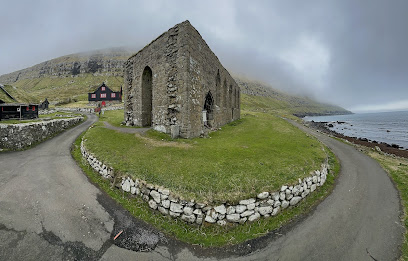
The Nordic House
Explore the Nordic House in Tórshavn, a vibrant cultural center offering a unique glimpse into Faroese heritage and contemporary artistry.
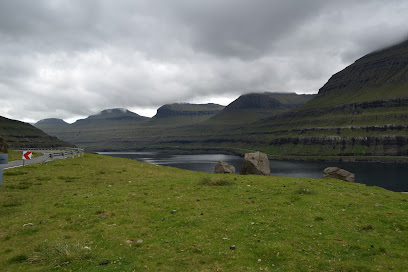
Skansin
Explore Skansin, a historical fortress in Tórshavn, and immerse yourself in the rich maritime history of the Faroe Islands, with stunning views and engaging experiences.

Trælanípa
Experience the breathtaking beauty of Trælanípa, a stunning cliff in the heart of the Faroe Islands offering unparalleled views and rich history.
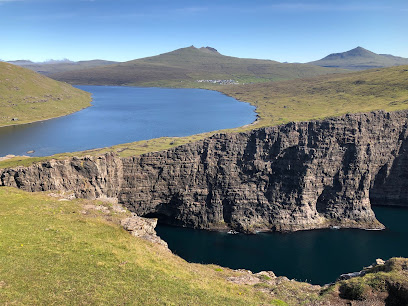
The National Gallery of The Faroe Islands
Explore the National Gallery of The Faroe Islands, where art meets the breathtaking beauty of the islands in a captivating cultural experience.
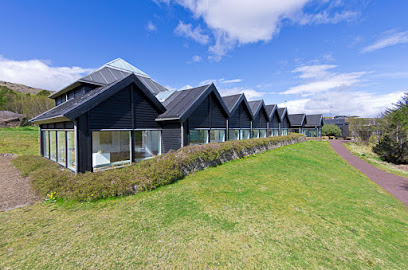
Tjóðsavnið (Faroe Islands National Museum)
Explore the Faroe Islands National Museum to uncover the history, culture, and natural wonders of this unique archipelago in the heart of the North Atlantic.
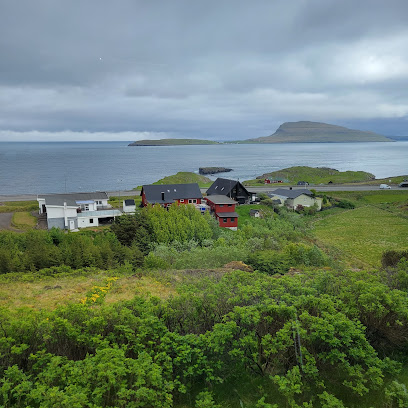
Kallur Lighthouse
Discover the breathtaking Kallur Lighthouse in the Faroe Islands, a stunning scenic spot perfect for hiking and photography enthusiasts seeking natural beauty.
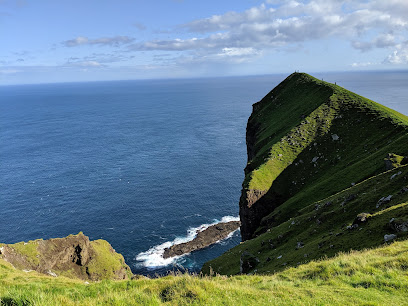
Slave Cliff (Lake Above the Ocean)
Discover the breathtaking views and exhilarating hikes at Slave Cliff in the stunning Faroe Islands, a natural wonder for every adventurer.
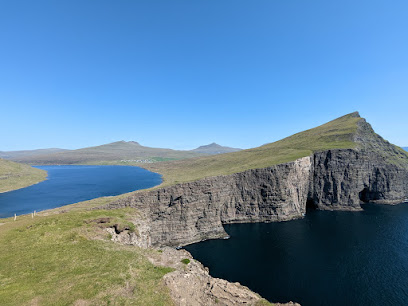
Witches Finger Trail
Explore the mystical Witches Finger Trail in the Faroe Islands, where breathtaking landscapes meet captivating folklore for an unforgettable hiking experience.
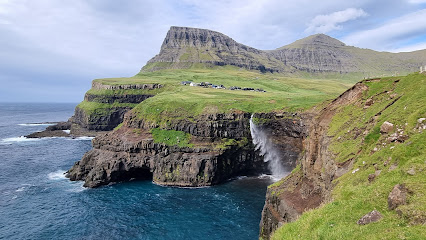
Mykines
Discover Mykines, the breathtaking island of the Faroe Islands, known for its dramatic cliffs, vibrant wildlife, and serene landscapes that captivate every traveler.
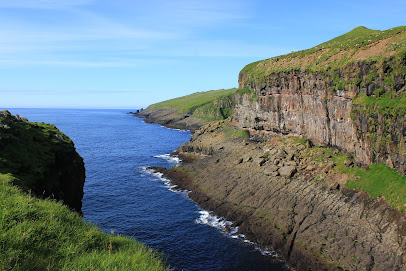
Visit Faroe Islands
Explore the breathtaking landscapes and rich culture of the Faroe Islands, a hidden gem in the North Atlantic, perfect for adventure and tranquility.
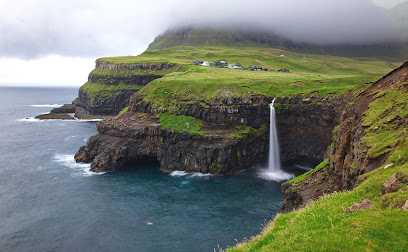
Svartafoss Waterfall
Discover the breathtaking Svartafoss Waterfall, a stunning natural wonder framed by unique basalt columns in the heart of the Faroe Islands.
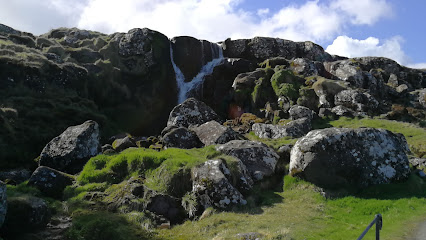
Faeroes
Explore the breathtaking landscapes, rich culture, and vibrant wildlife of the Faroe Islands, a unique adventure in the North Atlantic.
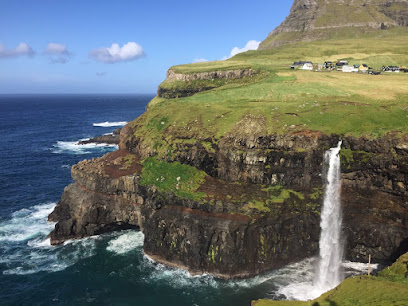
Føroya Sjósavn
Explore the captivating marine life of the Faroe Islands at Føroya Sjósavn, where education meets adventure in an unforgettable aquarium experience.
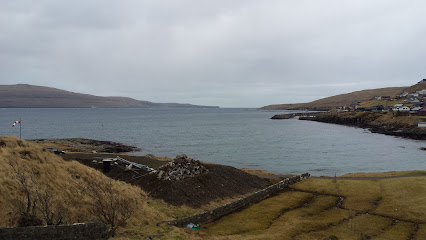
National Hospital of the Faroe Islands
Experience peace of mind in the Faroe Islands with access to quality healthcare at the National Hospital, a cornerstone of community wellness in Tórshavn.

Unmissable attractions to see
Vestmanna Tourist Centre
Explore the stunning Faroe Islands at the Vestmanna Tourist Centre, your gateway to adventure, local cuisine, and unique souvenirs.
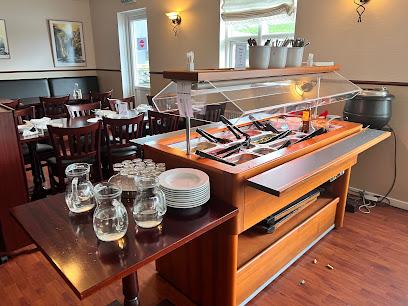
Klakkur
Explore Klakkur, a breathtaking mountain in the Faroe Islands, offering stunning views and an unforgettable hiking experience amidst nature's beauty.

Vestmanna
Explore Vestmanna, the picturesque gem of the Faroe Islands, where dramatic cliffs meet rich cultural experiences in a breathtaking coastal setting.

Essential places to dine
Katrina Christiansen
Discover authentic Scandinavian flavors at Katrina Christiansen in Tórshavn - a culinary gem of the Faroe Islands.

Angus Steakhouse
Experience exquisite steaks and local flavors at Angus Steakhouse in Tórshavn - A must-visit culinary destination in the Faroe Islands.
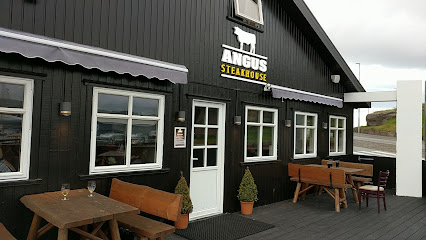
Áarstova
Experience authentic Faroese cuisine at Áarstova, a top-rated restaurant in Tórshavn showcasing local flavors and sustainable practices.
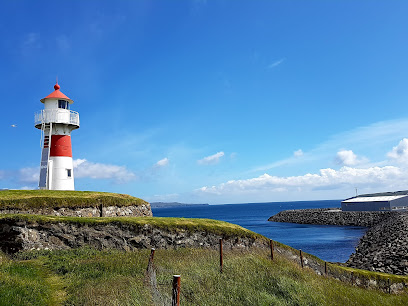
Barbara Fish House
Discover exquisite seafood at Barbara Fish House in Tórshavn - where every dish tells a story of the sea.
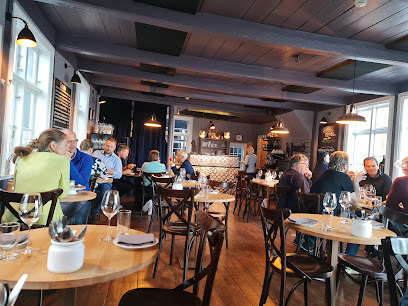
Koks Restaurant
Experience exquisite Faroese cuisine at Koks Restaurant, where local ingredients meet culinary artistry amidst breathtaking landscapes.
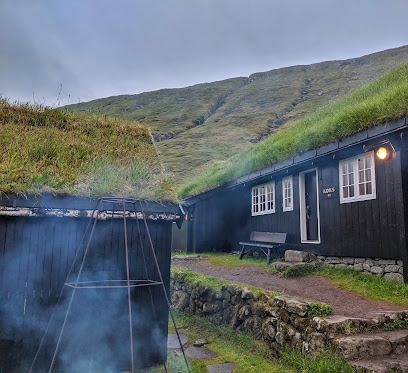
Kafé Kaspar
Discover Kafé Kaspar in Tórshavn - A cozy café offering delightful bagels and brunch in the heart of the Faroe Islands.
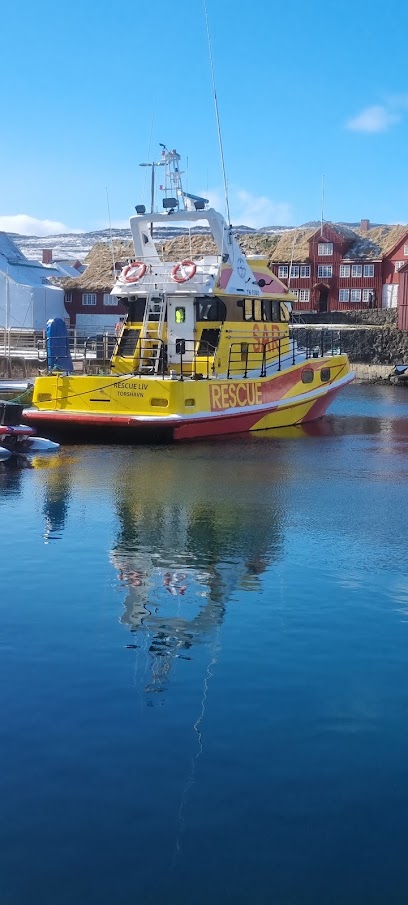
Fisk og Kips
Experience authentic Faroese cuisine with delicious fish and chips at Fisk og Kips in Tórshavn – perfect for budget-friendly dining.
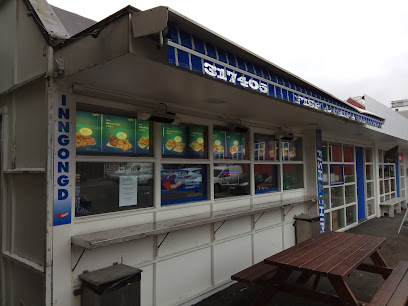
Kafe Umami
Discover the flavors of Tórshavn at Kafe Umami—where local ingredients meet culinary creativity in a cozy setting.

Suppugarðurin
Experience authentic Japanese ramen at Suppugarðurin in Tórshavn, where local ingredients meet traditional flavors.
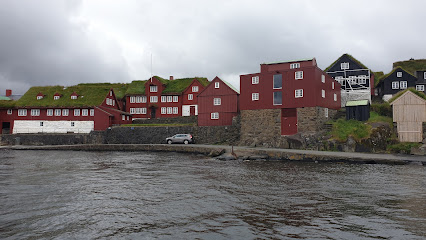
Seven
Experience authentic Chinese flavors at Seven in Tórshavn - where tradition meets taste amidst stunning scenery.
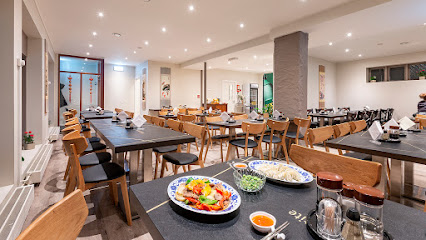
hvonn
Experience authentic Faroese cuisine at Hvonn in Tórshavn - a culinary gem featuring locally sourced ingredients and traditional flavors.
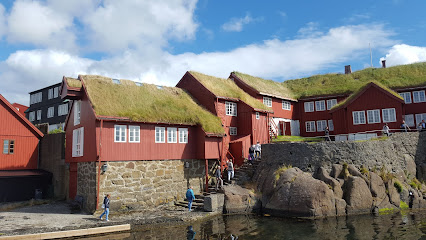
Ræst
Experience authentic Faroese cuisine at Ræst - a culinary gem in Tórshavn offering innovative dishes made from local ingredients.
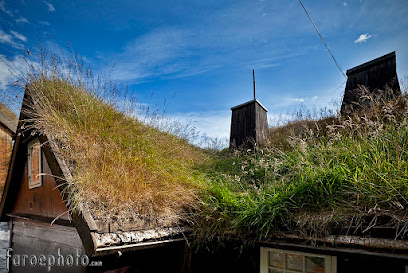
ROKS
Experience the exquisite flavors of Faroese cuisine at ROKS in Tórshavn – where tradition meets innovation.
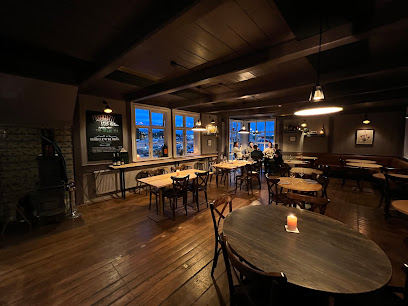
Skeiva pakkhús
Experience authentic Faroese cuisine at Skeiva Pakkhús, where local flavors meet warm hospitality in Tórshavn.

Pizza 67
Experience authentic pizza at Pizza 67 in Tórshavn – where fresh ingredients meet traditional recipes for unforgettable flavors.
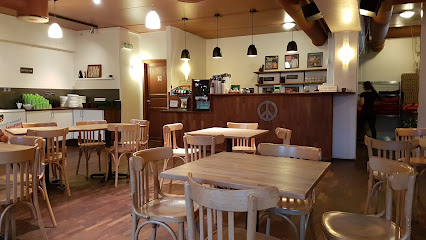
Markets, malls and hidden boutiques
H. N. Jacobsens Bókahandil
Explore H. N. Jacobsens Bókahandil: Tórshavn's unique gift shop and bookstore, offering local souvenirs, books, and toys in a cozy atmosphere.
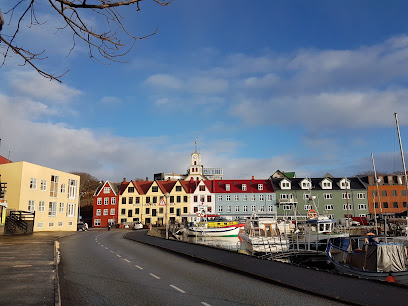
Navia (yarn)
Discover the enchanting knit shop Navia in Toftir, where high-quality yarns and local crafts meet the cozy charm of the Faroe Islands.

Breyðvirkið
Experience the heart of Faroese baking at Breyðvirkið, Tórshavn's beloved bakery known for its artisanal breads and delectable pastries.
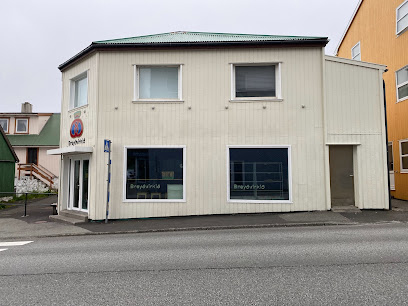
P/F Jógvan Weihe
Discover top-notch outdoor gear and local expertise at P/F Jógvan Weihe in Tórshavn, your gateway to adventure in the stunning Faroe Islands.
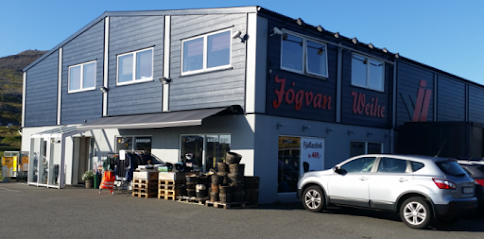
Á Landavegur
Discover the convenience of Á Landavegur, Tórshavn's premier supermarket offering local delicacies and international products in a modern setting.
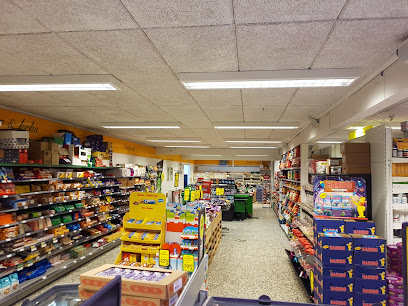
Mylnan
Explore Mylnan in Tórshavn for a unique grocery shopping experience that showcases the flavors and culture of the Faroe Islands.

Á Handil
Discover local flavors and international delicacies at Á Handil, the go-to grocery store in Tórshavn, Faroe Islands.

Guðrun & Guðrun
Explore unique Faroese fashion at Guðrun & Guðrun, Tórshavn's premier destination for sustainable and stylish clothing.
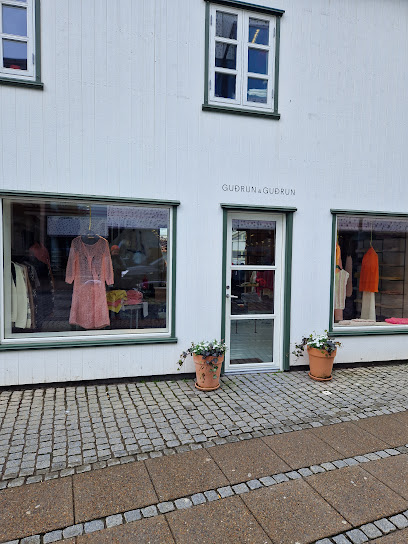
rentabike.fo
Discover the beauty of Tórshavn by bicycle with RentABike.fo – your go-to shop for bike rentals and gear in the Faroe Islands.

Á handil
Discover the flavors of the Faroe Islands at Á Handil, Tórshavn's charming grocery store offering local and international delicacies.

Inn við Grønlandsvegin
Explore Inn við Grønlandsvegin for a delightful grocery shopping experience in the heart of Tórshavn, offering local and international products.

Búrhandilin
Discover the charm of Búrhandilin, a local grocery store in Skopun, offering fresh produce and a taste of Faroese culture.
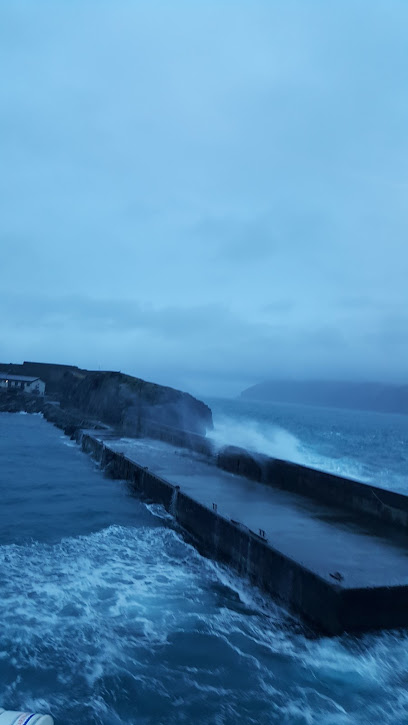
Á Sandoyggin
Discover the charm of local shopping at Á Sandoyggin in Skopun, where everyday essentials meet Faroese heritage.
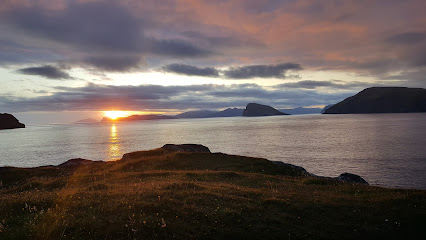
Sheep
Discover the essence of Faroese cuisine at Sheep Supermarket in Tórshavn, offering local flavors and unique products for every visitor.
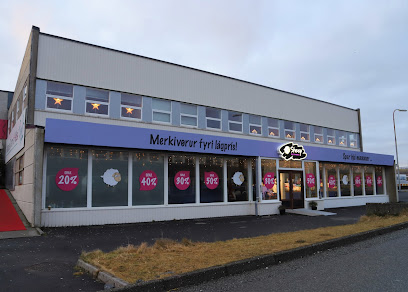
Ryggstein Sigarir
Experience the art of cigar smoking at Ryggstein Sigarir in Tórshavn, where quality meets tradition in a welcoming atmosphere.
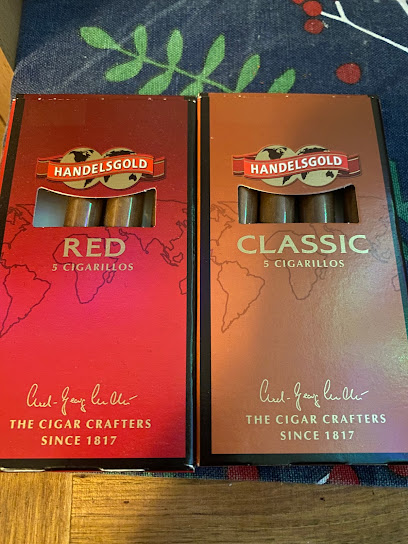
Essential bars & hidden hideouts
Irish Pub Torshavn
Discover the warmth and flavor of Ireland at Irish Pub Torshavn, a charming spot in the heart of the Faroe Islands.
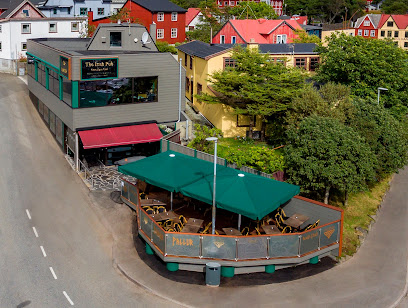
Katrina Christiansen
Experience the authentic flavors of Scandinavian cuisine at Katrina Christiansen, Tórshavn's culinary jewel in the Faroe Islands.
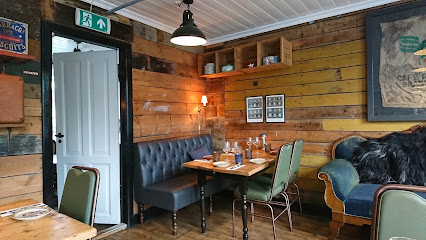
Angus Steakhouse
Experience the finest steaks at Angus Steakhouse in Tórshavn, where quality meets tradition in a warm and welcoming environment.
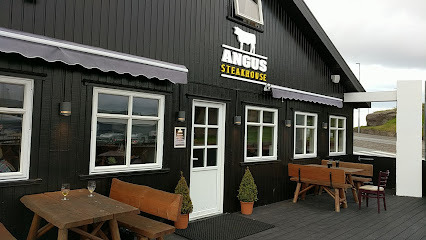
THE TARV Grillhouse
Experience the best of Faroese cuisine at THE TARV Grillhouse, where local flavors meet culinary excellence in Tórshavn.
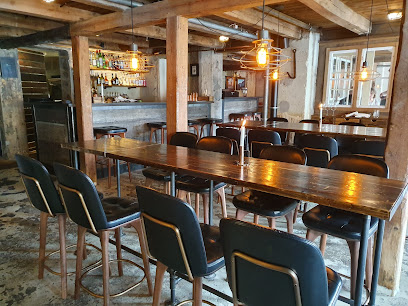
Sirkus Bar
Experience the vibrant nightlife of Tórshavn at Sirkus Bar, where unique drinks and a lively atmosphere await every visitor.
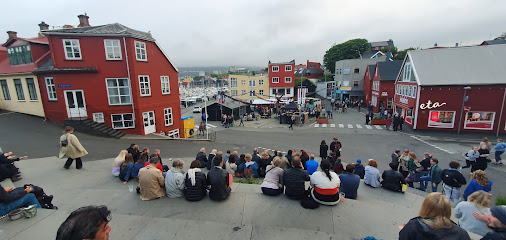
Mikkeller Tórshavn
Experience the vibrant atmosphere and exceptional craft beers at Mikkeller Tórshavn, a top bar destination in the heart of the Faroe Islands.

Essabarr
Experience the cozy charm of Essabarr, Tórshavn's beloved cafe, with delicious food and a vibrant atmosphere reflecting the heart of the Faroe Islands.
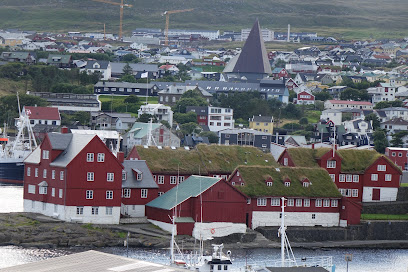
Kafe Umami
Discover the flavors of the Faroe Islands at Kafe Umami, where local ingredients meet culinary creativity in a cozy setting.
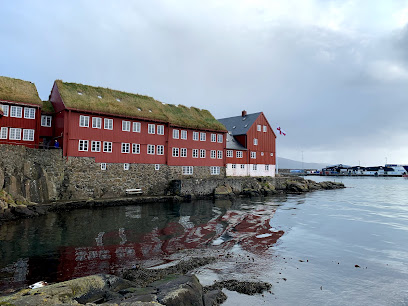
OY Brewing
Discover the essence of Faroese brewing at OY Brewing, Tórshavn's premier brewpub offering craft beers and delicious bar food.
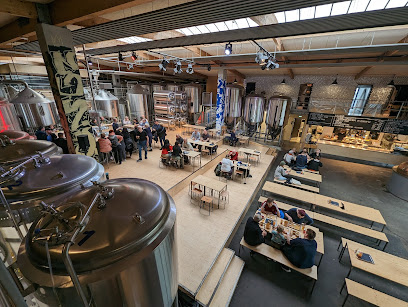
ROKS
Discover the exquisite flavors of the Faroe Islands at ROKS, a culinary gem in Tórshavn offering innovative dishes and stunning views.
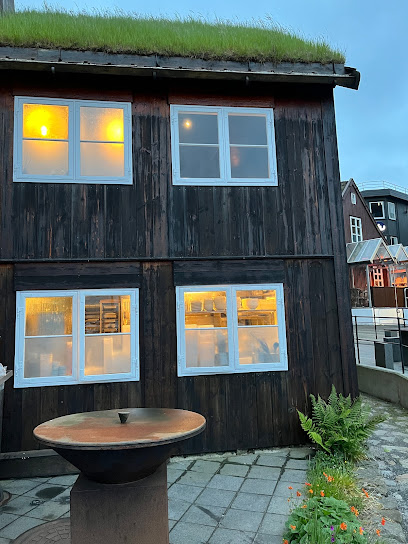
HAMSA
Experience the unique flavors of the Faroe Islands at HAMSA, where local ingredients meet a cozy brasserie atmosphere.
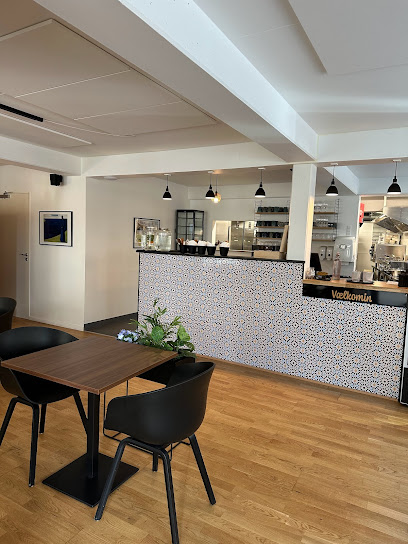
Glitnir
Experience the vibrant nightlife of Tórshavn at Glitnir, a cozy bar offering a unique selection of local drinks and a friendly atmosphere.

Blábar
Discover Tórshavn's vibrant nightlife at Blábar, where jazz and blues create an unforgettable atmosphere for tourists and locals alike.
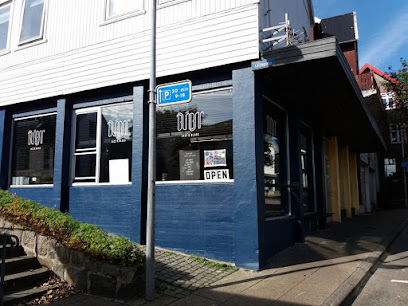
Tórshøll
Discover Tórshøll, a vibrant bar in Tórshavn, where local culture meets a fantastic selection of drinks in a cozy atmosphere.
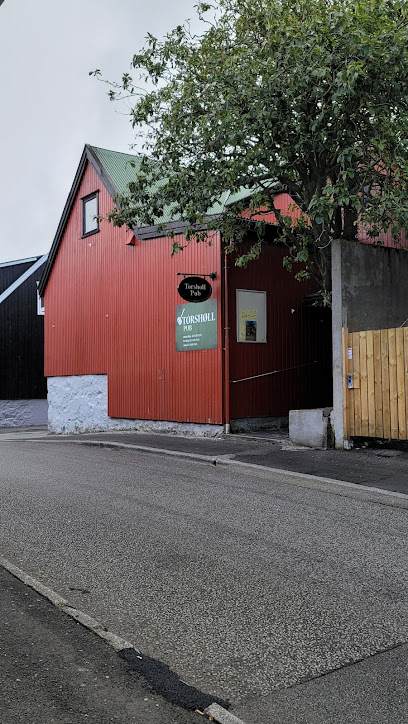
Hallartún
Discover the essence of Faroese cuisine at Hallartún, a top-rated restaurant in Tórshavn, showcasing local flavors and fresh ingredients.
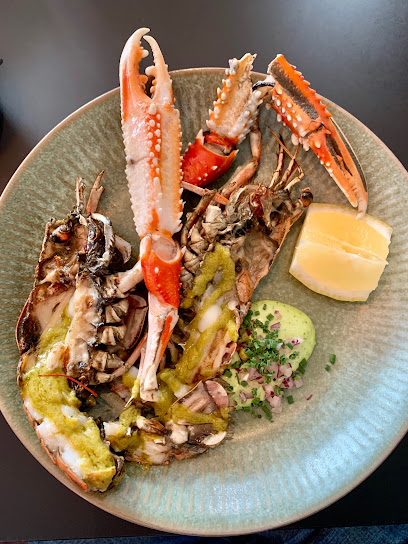
Local Phrases about Hestur Island
-
- HelloHalló
[hah-loh] - GoodbyeFarvæl
[far-vail] - YesJa
[yow] - NoNei
[nay] - Please/You're welcomeVænligt/Í lagi
[vain-likht/e lay-yee] - Thank youTakk fyri
[tahk fi-ree] - Excuse me/SorryFyrirgef mær
[feer-ir-yeef my-er] - How are you?Hvussu gongur tú?
[khoos-so gon-goor too] - Fine. And you?Godt. Og tú?
[goht oh too] - Do you speak English?Talar tú enskt?
[tah-lar too enskt] - I don't understandEg skilji ikki
[ay shil-yee ih-kee]
- HelloHalló
-
- I'd like to see the menu, pleaseEg vil síggja menu, vænligt
[ay vil see-ya meh-noo, vain-likht] - I don't eat meatEg eta ikki kjøt
[ay eh-tah ih-kee chyut] - Cheers!Skaal!
[skawl] - I would like to pay, pleaseEg vil gjalda, vænligt
[ay vil yal-dah, vain-likht]
- I'd like to see the menu, pleaseEg vil síggja menu, vænligt
-
- Help!Hjálp!
[hyowlp] - Go away!Far burtur!
[far boor-toor] - Call the Police!Ringja løgregluna!
[reen-gyah lur-eh-gloo-nah] - Call a doctor!Ringja læknin!
[reen-gyah lay-kneen] - I'm lostEg er týndur
[ay air teend-oor] - I'm illEg er sjúk
[ay air shoyk]
- Help!Hjálp!
-
- I'd like to buy...Eg vil keypa...
[ay vil kay-pah] - I'm just lookingEg er bara at síggja
[ay air bah-rah at see-yah] - How much is it?Hvat kostar tað?
[kvat koh-stahr tah] - That's too expensiveTað er ov dyrt
[tah air ohv deert] - Can you lower the price?Kanstu lægga prísin?
[kahn-stoo lie-gah pree-sin]
- I'd like to buy...Eg vil keypa...
-
- What time is it?Hvat er klokkan?
[kvat air kloh-kahn] - It's one o'clockTað er eitt
[tah air eyt] - Half past (10)Hálva tíggju
[hahl-vah tee-yoo] - MorningMorgun
[mor-goon] - AfternoonEftirmiðdagur
[eft-ir-mee-thah-goor] - EveningKvøld
[kvul] - YesterdayÍ gjár
[ee dyar] - TodayÍ dag
[ee dakh] - TomorrowÍ morgin
[ee mor-gin] - 1Eitt
[eyt] - 2Tvær
[tvah-ir] - 3Tríggjar
[tree-yar] - 4Fýra
[foo-ir-ah] - 5Fimm
[feem] - 6Seks
[seks] - 7Sjey
[shay] - 8Átta
[owt-tah] - 9Niða
[nee-ah] - 10Tíggju
[tee-yoo]
- What time is it?Hvat er klokkan?
-
- Where's a/the...?Hvar er ein...
[kvar air iy-n...] - What's the address?Hvat er adresan?
[kvat air ah-dre-sahn] - Can you show me (on the map)?Kanstu vísa mær (á kortinum)?
[kahn-stoo vee-sah my-er (ow kohr-teen-oom)] - When's the next (bus)?Nær kemur næsta (buss)?
[nair keh-moor nyst-ah (boos)] - A ticket (to ....)Ein miði (til ....)
[iy-n mee-dih (teel)]
- Where's a/the...?Hvar er ein...
History of Hestur Island
-
Hestur Island, like the rest of the Faroe Islands, was first settled by Norse Vikings in the early 9th century. The island's name, Hestur, translates to 'horse' in Faroese, possibly indicating the presence of wild horses or the island's use for horse grazing during the Viking Age. Archaeological findings on the island, including ancient stone structures, suggest that the Vikings established small settlements here, leveraging its strategic location and natural resources.
-
During the medieval period, the Faroe Islands, including Hestur, came under the influence of the Church. Monastic orders established a presence on the island, contributing to the spread of Christianity. The influence of the Church is evident in various historical remnants, including old ruins and religious artifacts found on the island. These monastic communities played a significant role in shaping the cultural and spiritual life of Hestur's inhabitants.
-
From the 13th to the 17th century, the Faroe Islands were part of the trade network of the Hanseatic League. Hestur Island benefited from this period of economic growth, engaging in trade with merchants from Germany, Norway, and other parts of Europe. The island's natural harbors served as important stops for trading vessels, facilitating the exchange of fish, wool, and other local products. This era brought significant prosperity and cultural exchange to Hestur.
-
In the 19th century, Hestur, along with the rest of the Faroe Islands, was impacted by the geopolitical changes brought about by the Napoleonic Wars. The islands were transferred from Norwegian to Danish control in 1814, following the Treaty of Kiel. During this period, Hestur's economy faced challenges due to blockades and trade restrictions. The islanders adapted by focusing more on local resources, such as fishing and sheep farming, to sustain their livelihoods.
-
The 20th century brought significant modernization to Hestur Island. Infrastructure improvements, such as the establishment of regular ferry services and the introduction of electricity, transformed the daily lives of the island's residents. Hestur also saw a shift in population dynamics, with many young people moving to larger towns for better opportunities. Despite these changes, the island has preserved its traditional Faroese culture, including its unique dialect, customs, and communal lifestyle.
-
Hestur Island is known for its vibrant cultural traditions and festivals. One of the most notable is Ólavsøka, a national holiday celebrated on July 29th, which includes traditional Faroese chain dancing, boat races, and community gatherings. The island's residents also maintain age-old practices such as sheep herding and fishing, which are integral parts of their cultural heritage. These traditions offer visitors a glimpse into the rich and enduring culture of Hestur.
Hestur Island Essentials
-
Hestur Island is part of the Faroe Islands archipelago and can be reached by ferry from the capital, Tórshavn. The ferry service is operated by Strandfaraskip Landsins, with regular departures. The journey takes approximately 1 hour. Alternatively, you can charter a boat or helicopter for a more personalized experience.
-
Once on Hestur Island, the primary mode of transportation is walking, as the island is relatively small. There are no public transport services on the island. Biking is also a popular option, bringing your own bike or renting one in Tórshavn before taking the ferry. For exploring the island at a leisurely pace, consider guided walking tours offered by local operators.
-
The official currency in the Faroe Islands is the Faroese króna (DKK). Credit cards are widely accepted, but it's advisable to carry some cash, especially for small purchases or in case electronic payment systems are down. ATMs are available in Tórshavn, so withdrawing cash before your trip to Hestur Island is recommended.
-
Hestur Island is a safe destination with very low crime rates. However, it's always prudent to take standard precautions: avoid leaving personal belongings unattended and be cautious at night. There are no specific high-crime areas targeting tourists on Hestur Island.
-
In case of emergency, dial 112 for immediate assistance. The nearest medical facilities are in Tórshavn, so it is advisable to carry a basic first-aid kit and any necessary medications. Travel insurance that covers medical emergencies is highly recommended.
-
Fashion: Do dress in layers and wear waterproof clothing, as the weather can be unpredictable. Avoid wearing overly flashy or revealing clothing. Religion: Do respect local customs and traditions. Be considerate when visiting churches or religious sites. Public Transport: There is no public transport on Hestur Island, so plan accordingly. Greetings: Do greet locals with a friendly 'Hallo' or 'Góðan dagin.' A smile goes a long way. Eating & Drinking: Do try local Faroese dishes and accept food offerings graciously. Don’t refuse hospitality, as it is considered impolite.
-
To experience Hestur Island like a local, take time to explore its natural beauty, including the scenic hiking trails and bird-watching spots. Engage with the island's residents, who are often willing to share insights about their way of life. Don't miss the opportunity to explore the island's caves and cliffs, which offer stunning views and unique geological formations.
Trending Landmarks in Hestur Island
-
Kirkjubømúrurin
-
The Nordic House
-
Skansin
-
Trælanípa
-
The National Gallery of The Faroe Islands
-
Tjóðsavnið (Faroe Islands National Museum)
-
Kallur Lighthouse
-
Slave Cliff (Lake Above the Ocean)
-
Witches Finger Trail
-
Mykines
-
Visit Faroe Islands
-
Svartafoss Waterfall
-
Faeroes
-
Føroya Sjósavn
-
National Hospital of the Faroe Islands
Nearby Cities to Hestur Island
-
Things To Do in Tórshavn
-
Things To Do in Nólsoy
-
Things To Do in Sandavágur
-
Things To Do in Miðvágur
-
Things To Do in Strendur
-
Things To Do in Runavík
-
Things To Do in Kvívík
-
Things To Do in Sorvagur
-
Things To Do in Hvalvík
-
Things To Do in Vestmanna
-
Things To Do in Gøta
-
Things To Do in Klaksvik
-
Things To Do in Tvøroyri
-
Things To Do in Vágur
-
Things To Do in Seydisfjordur







